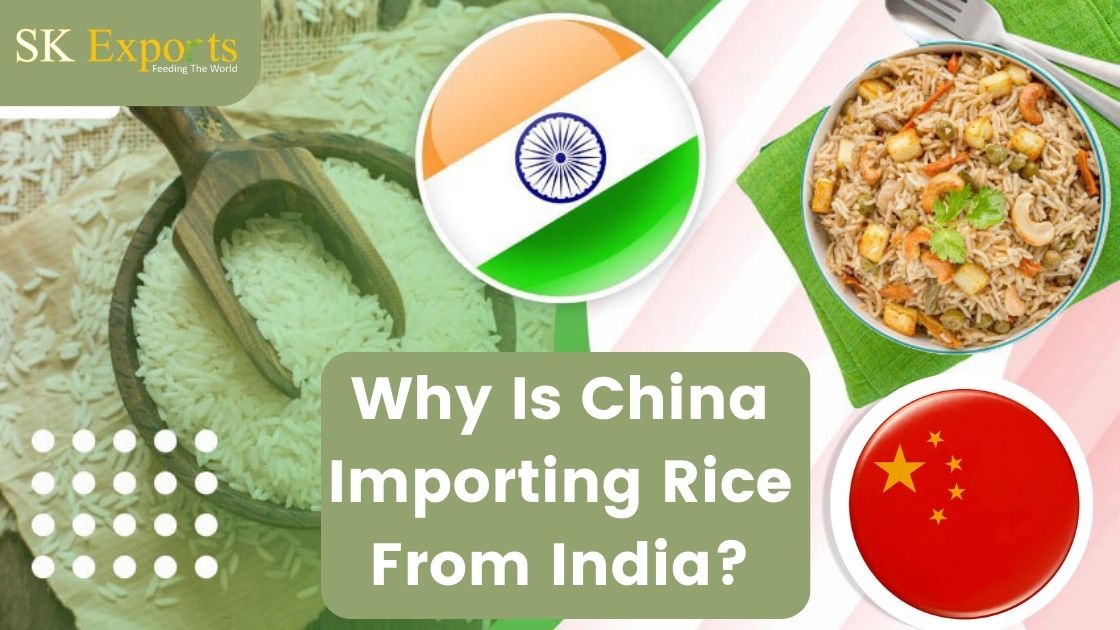In recent years, a fascinating trend has emerged in the global rice market: China, historically known as the world’s largest producer and consumer of rice, has increasingly turned to importing rice from India. This shift in China’s rice sourcing strategy has sparked curiosity and raised questions about the underlying reasons driving this unexpected development. In this blog post, we’ll delve into the factors behind China’s decision to import rice from India.
Exploring China’s Rice Importation Trend
-
Domestic Production Challenges
Despite being a leading producer of rice, China faces challenges in meeting its domestic demand due to factors such as urbanization, land constraints, and environmental concerns. Rapid urbanization has led to the conversion of agricultural land for industrial and residential purposes, reducing the area available for rice cultivation. Additionally, environmental degradation, water scarcity, and pollution have impacted agricultural productivity in certain regions.With China’s population continuing to grow and urbanization accelerating, the pressure on domestic rice production is expected to intensify. Addressing these challenges requires innovative solutions and potentially importing rice from countries like India, which can offer a supplementary source of supply to meet China’s burgeoning demand.
Year China’s Rice Production (Million Metric Tons) 2018 209 2019 206 2020 204 2021 201 2022 198 2023 195 -
Quality and Diversity
China’s growing middle class has developed a taste for premium rice varieties that may not be readily available domestically. Indian basmati rice, renowned for its distinctive aroma and long grains, has gained popularity among Chinese consumers seeking high-quality rice for special occasions and culinary purposes. Furthermore, India offers a diverse range of rice varieties, including non-basmati types, catering to different preferences and culinary traditions.The demand for premium rice varieties reflects shifting consumer preferences and lifestyle changes in China, where culinary experimentation and gourmet dining experiences are on the rise. As consumers become more discerning and adventurous in their food choices, the appeal of imported rice varieties, such as those from India, is likely to continue growing.
Type of Rice Characteristics Basmati Long-grain, aromatic, premium quality Non-Basmati Various grain lengths, versatile in cooking -
Trade Relations and Geopolitical Factors
:The importation of rice from India also reflects the evolving dynamics of trade relations and geopolitics between the two countries. Despite occasional tensions and border disputes, China and India maintain significant economic ties, with bilateral trade volumes reaching substantial levels. As both countries seek to diversify their trade partners and reduce dependence on traditional suppliers, the rice trade presents an opportunity for mutually beneficial cooperation.Strengthening economic ties through rice trade can contribute to fostering greater stability and mutual understanding between China and India, despite geopolitical tensions in other areas. By leveraging economic interdependence, both countries have the potential to enhance regional integration and promote peace and prosperity in the broader Asian continent.
Year China-India Bilateral Trade Volume (Billion USD) 2018 71.54 2019 75.06 2020 82.68 2021 85.72 2022 89.15 2023 92.30 -
Market Dynamics and Price Competitiveness
India’s competitive advantage in rice production, driven by factors such as lower labor costs, abundant arable land, and favorable agro-climatic conditions, enables it to offer rice at competitive prices in the international market. This price competitiveness makes Indian rice an attractive option for Chinese importers seeking cost-effective sources to meet their growing demand.The availability of competitively priced rice from India provides Chinese consumers with access to affordable and high-quality food staples, thereby contributing to food security and price stability in China. Moreover, importing rice from India helps diversify China’s rice supply sources, reducing vulnerability to supply chain disruptions and market fluctuations.
Type of Rice Price (USD per Metric Ton) Indian Basmati 900-1200 Chinese Rice 1000-1400 -
Government Policies and Trade Agreements
Government policies and trade agreements also play a significant role in facilitating rice trade between China and India. Tariff reductions, trade liberalization measures, and preferential trade agreements between the two countries contribute to the ease of rice importation and foster bilateral economic cooperation. Additionally, initiatives such as the Belt and Road Initiative (BRI) may provide infrastructure support and logistical connectivity, further facilitating cross-border trade.By aligning their policies and fostering a conducive regulatory environment for trade, China and India can unlock the full potential of their economic partnership and capitalize on emerging opportunities in the rice market. Collaboration in areas such as trade facilitation, customs procedures, and market access can streamline bilateral trade flows and promote mutual prosperity.
Initiative Impact on Rice Trade Belt and Road Initiative Enhanced infrastructure, improved connectivity for trade
Conclusion
In conclusion, China’s decision to import rice from India reflects a confluence of factors, including domestic production challenges, quality preferences, trade relations, market dynamics, and government policies. This emerging trend underscores the interconnectedness of the global rice market and the importance of strategic trade partnerships in meeting the evolving needs of consumers and ensuring food security.
As China continues to navigate its rice supply-demand dynamics and explore opportunities for trade diversification, the importation of rice from India is likely to remain a significant aspect of bilateral economic relations. By understanding the underlying reasons behind this trend, stakeholders can better anticipate market dynamics, identify opportunities for collaboration, and foster sustainable trade relationships between the world’s two most populous nations.
